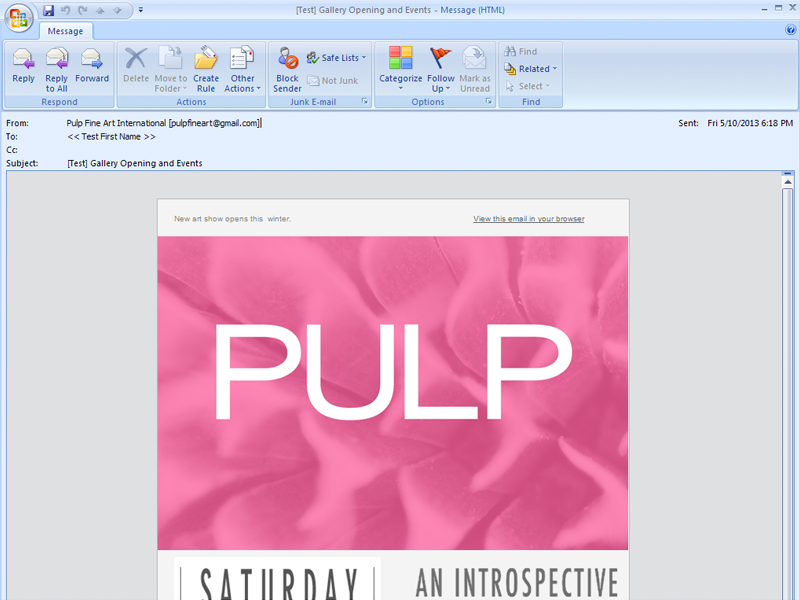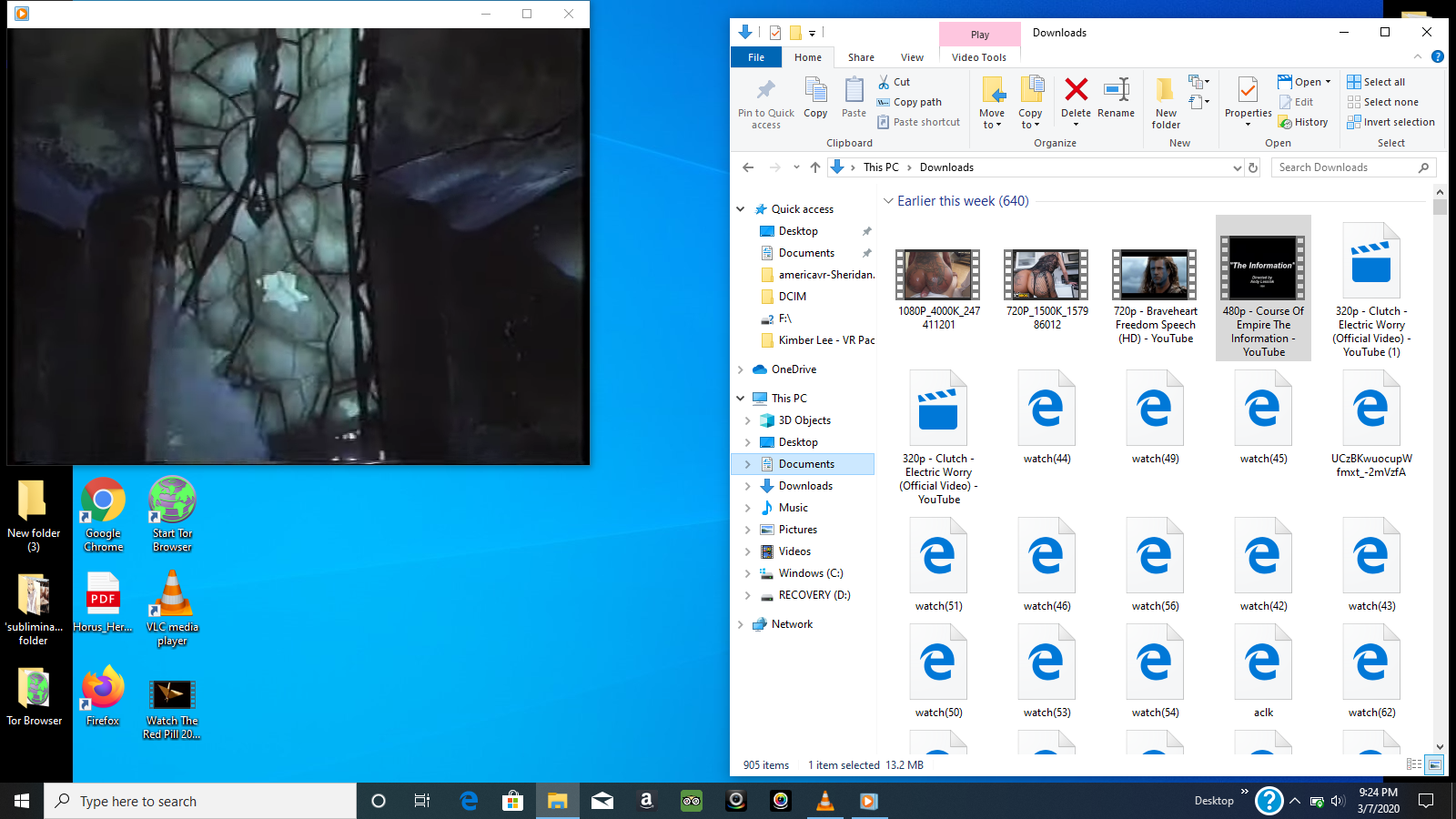
Dec 05, 2014 Apple Mail has let you make your special mark with an HTML-style email signature since OS X Lion. The process of setting up an HTML signature in Apple Mail has only gotten more complex over the. Insert HTML email into Outlook for Mac I have a basic email file I created in Dreamweaver that I'd like to send using the Outlook client on the mac. What are the necessary steps to insert the HTML file into an email on this computer?
More than 1.1 billion people use Office. That’s 1 in 7 people on the planet. Microsoft Outlook is the go-to email client for business and a stunning number of users use it in everyday work. It is a very powerful email client, but sometimes this power is a shortcoming.
One such case is using Microsoft Outlook to send HTML-formatted newsletters or forms. “But Outlook allows me to create HTML-formatted messages using a lot of controls and styles,” you might say, and you would be 100% right. But as soon as you try to create an HTML message using special software and use the resulting HTML as a source for your message, you will be surprised: Outlook doesn’t allow you to use your own HTML source to build a message! “OK, but it is not a big problem” – you say, and again you may be right because you can open the resulting HTML message using Internet Explorer and copy-n-paste the data through the clipboard into the Outlook message. Yes, this can be done, but there is a surprise waiting for you.
Beginning with Office 2007, Outlook only supports Microsoft Word as an engine for generation and display of messages in HTML format. The previous versions of Microsoft Outlook used Internet Explorer as an HTML engine. These technical changes cause significant differences in both the appearance of the resulting message as well as in the HTML code itself, which undergoes alterations and corrections. At first glance, this does not seem to be a big problem… but only at first glance.
Why is it so important to save the initial HTML code of emails?
The answer to this question is very simple – to be sure that your HTML email will look the same in Microsoft Outlook and in Google Mail, Apple Mail and in email clients on tables and mobile devices. By creating an HTML email using an HTML editor that is not Microsoft Word or Outlook, you have the chance to test how the code will display in various browsers and mail clients. For example, you can use a free online service from Litmus Software which will let you test your HTML code’s appearance in more than thirteen email clients:
Using an HTML editor along with a testing and optimization tool like this, you can create rather complex HTML messages and be confident that they will appear properly for all recipients. But this remains the case only so long as your HTML source code stays in its initial form. As soon as you put your code into Microsoft Outlook through the exchange buffer, the whole code will be transformed and corrected.

What is the HTML body of the message?
We’ll create a simple HTML file:
<html>
Hello <b>World</b>!
</html>
The file size is 36 bytes. We open this file in Microsoft Word as HTML and save it as HTML with a different name. We see that the size of the resulting file is 35.8Kb! Just like that, the file size increased 1000 times! But it looks the exact same as before. To clarify what the differences are, let’s look at the source of this new HTML file:
| Visit Send Personally for Outlook homepage and download the add-in to send your emails with original HTML code! |
So we see that our simple HTML text has been enriched with a huge mass of ‘garbage’ that has come seemingly from out of nowhere, and which is many times greater than that original text in its initial format. After this transformation, we can no longer be sure that this code will appear the way that we want it to.
Why does Word change initial HTML code in the email body?
These changes occur because Microsoft Word is not an HTML editor; it only allows the import of files of that format. That means that the source text was imported into Microsoft Word and then exported back out as HTML created at the time of saving the document – and the minimum file size for this HTML is 35 Kb. But that is when the HTML format is chosen when saving. There is, actually, a way for Microsoft Word to save in a different format, called HTML-filtered, which will filter out most of the added garbage. This method results in a file of 5Kb, which is still 10 times more than the original source file.
Note that although we are discussing Microsoft Word, all of this concerns Microsoft Outlook as well, since the same HTML engine is used in both products. The HTML-filtered format is what is used when generating emails in HTML for Outlook. This means that Microsoft Outlook simple does not allow us to create a message in HTML that is less than 5Kb (and that is an empty message).
This transformation of the message by the Outlook editor is another drawback of the product. Imagine a situation where the template of a weekly newsletter is created using an HTML-editor to avoid destroying the HTML formatting of the document when importing and exporting it using Word. When this document is placed into the body of the message in the Outlook editor (using the copy-n-paste option), our HTML code will be transformed and made much more complex, which can destroy the initial formatting and display the document incorrectly when it is received by other email clients and browsers.
Microsoft Outlook does not provide any options to send messages without transforming the HTML body. There are some plug-ins in the software market that allow editing of the message body in HTML, thus avoiding transformation. But these, unfortunately, do not solve the problem, because Microsoft Outlook still executes the transformation as soon as you click “Send”. This means that it is no difference between creating a nice-looking HTML email in a special HTML-editor and pasting it into the message via the exchange buffer and then sending the email, and using a special program to let you paste HTML code in its initial format when creating the email. In both cases, the recipient receives a larger and reformatted message.
How can one save the initial HTML source code?


Regardless of the limitations of Microsoft Outlook, there is still the possibility to send an email with its initial formatting without executing an HTML transformation. This can be done using the Send Personally, which is a Microsoft Outlook add-in designed to send mailing lists with personalized greetings – which is very convenient in newsletters, announcements, and promotions. But right now, we are most interested in this program for its ability to work with the HTML source of the message body.
This program adds an Insert HTML to the ribbon in the message editor section; this option appears when we create a new email or answer an existing email. When we click on the Insert HTML button, a window opens, showing the HTML source of the current message. In this window, we can create HTML code for the message and edit it. Even if we have just created a new email and have not yet written anything in the body of the message, we can click on the Insert HTML button and we see that Outlook has already put in all the ‘necessary’ HTML coding in:
Using this window, we can simply select the whole text that has been added by the Outlook editor and replace it with our own, using either the exchange buffer or the “Load from file…” option.
You can then use the Preview option to see the resulting HTML, or click OK to save the new text in the message body. Note that we cannot edit the text in the message using the Outlook editor, because Outlook will immediately transform our source HTML. If we need to carry out further modifications in the message, then we will need to click the Insert HTML button again and make the changes in the window.
At this point, we have created an email and not allowed Outlook to transform the source HTML, but this is only the first step. Next, we need to prevent modification to the message when the Send button is clicked. This task is performed using the Send Personally button. The issue is that this program sends messages through the MAPI system and does not call the handler which is triggered when the Send button is pressed. With the Send button never being clicked, no transformation occurs. So all the needs to be done is to press the Send Personally button instead of Send.
Presently, this is the only way to send an HTML email from Microsoft Outlooks and preserve the original HTML formatting. To verify this, go to the Sent folder of Microsoft Outlook and double-click on the message to view it, and then right-click on the message body and choose the View source option. Doing this, we see:
There are 2 key points to remember here:
- The email can only be edited in the HTML editing window. This is true for any modification. Outlook will change ‘our’ HTML to its own HTML even if we simply change the user account from which the email is sent.
- The message must be sent using the Send Personally button, not using Send.
Video tutorial on how to send HTML emails unchanged by Outlook
Watch this step-by-step guide on Insert HTML feature to learn how to prevent Outlook from altering the HTML content of outgoing messages by using the.
Html Signature Mac Mail Catalina
| Visit Send Personally for Outlook homepage and download the add-in to send your emails with original HTML code! |
Apple Mac OS X Mountain Lion 10.8 is now available. Once again, Apple updated Mail.app with some changes. If you want to create a custom HTML email signature for Mail on Mountain Lion, the HTML coding part remains the same but the installation have changed. Follow this tutorial to create a HTML email signature file and to get it installed into the new version of Mail on Mountain Lion OS X 10.8.
:max_bytes(150000):strip_icc()/003_html-with-textedit-3469900_.jpg-74de12d588794e7d8bcbd5b095691c90.jpg)
For Mac OS X 10.7 users, please follow my previous tutorial: Create a HTML Signature in Apple Mail on Lion OS X 10.7.
Step 1: Designing the HTML/CSS
Before we begin, here are some basic but important notes to keep in mind as you design your signature. One major obstacle in designing HTML e-mail templates is that there are literally dozens of different e-mail clients out there (most if not all can’t handle CSS and HTML as well as our internet browsers can) so you have to keep your design and codes as simple and straight forward as possible.
- Use tables for basic layout. The CSS float property is not supported in Gmail or Outlook, making CSS layouts impractical.
- Use inline CSS. The style tag is not supported in Gmail, and support for CSS selectors is spotty.
- Use only basic CSS properties. E-mail clients tend to be very picky about which CSS properties they support. Campaign Monitor has a great summary of CSS support in e-mail to use for reference.
- Use absolute URLs. Relative paths won’t work for an e-mail signature. So all your links need to be absolute URLs.
- Link to images. I personally dislike e-mail signature images as attachments (it makes it easy to mistaken that image as a legitimate attachment). Because of this, I recommend linking to your images by placing them on a web server rather than including them as attachments.
For my signature, I used a two-column table. I have my logo on the left and the text on the right. I placed each element inside its own SPAN division to have the text float left without it breaking off to its own line and so that I could use inline CSS to format each element. If you use a DIV instead of a SPAN, each element will start in a new line. You can view my HTML design here and feel free to use it as a starting point for your own email signature.
For STEP 4, you will need to paste the HTML code of your email signature design. If you used MYDESIGNPAD’s Email Signature Service, read below to reveal the HTML code from the HTML file that was emailed to you.
How to reveal and copy HTML code in Safari
Open your HTML email signature file with Safari.
Go to Safari/Preferences.
On the “Advanced” tab, check “Show Develop menu in menu bar.”
On Safari’s menu bar, go to Develop/View Page Source to reveal HTML code
Select all of the HTML code and copy.
Step 2: Create Placeholder Signature in Mail
In Mail.app, open Preferences and click on the Signatures tab. There you will see 3 columns, the 1st one are your mail box accounts, the 2nd one are your custom signatures and the 3rd column is the signature detail preview. Create a new placeholder signature by clicking on the plus icon at the bottom of the 2nd column and name it. Drag your new signature from column 2 into your preferred mail box in column 1. Select your preferred mail box in the first column and go down to Choose Signature at the bottom. In the drop down menu, find and select your new signature. Note: At this point you will not see your HTML signature design on the 3rd column yet. Leave the 3rd column as is for now. Close window and quit Mail.app.
Html For Mac Mail Template
Step 3: Open the Signatures Folder
On Finder’s top nav, drop down the Go menu and than hold down the Option key to see the hidden Library folder. Once the Library folder is open, go to: ~/Library/Mail/V2/MailData/Signatures/.
Step 4: Update Placeholder Signature
Find the signature that you just added (a file ending with a .mailsignature extension). If there are multiple files in the folder, switch to list view. The signature that you just added in Mail.app should be the file that with the most recent modified date. When you have located the .mailsignature file, open it with TextEdit. You may see some metadata info on top and some HTML code below it. Delete all the HTML code (highlighted in picture below) and leave the metadata info untouched.
Under the metadata info, paste the HTML code of your email signature (Read bottom of Step 1 for instructions on how to reveal and copy the HTML code of your email signature design with Safari). Hit Save and quit TextEdit.
Step 5: Lock Updated Signature File – Important Step!
This step must be followed correctly in order for this signature to work or else Mail.app will use the original version of the signature instead of the new one. Locate the .mailsignature file that you just updated in Finder again. Press Command+I or right click on file to Get Info. In the Get Info window, mark the Locked check box.
***Another way to lock the file is by clicking on the gray text to the right of the file name on the header of TextEdit. A drop-down menu will pop up giving you the option to lock file. (See 2nd image in Step 4)***
Step 6: Check Installation
Restart Mail.app. Your new custom signature should appear automatically when you click on Compose Mail. If not, make sure you have followed Step 2 correctly. Links will not work and the images if any may not show when composing an email. But the links will work and the images will show on the receiving end if the source locations are correct. Compose and send yourself a test email with your new signature selected. If the images show, the links working and everything looks as it should, then you have done this correctly. Good Job!
Summing Up
Feel free to contact me if you run into any problems creating your very own Apple Mail signature. I’ll be pleased to see your creative HTML email signature so please post your link in the comment area. Cheers!
If creating your own HTML signature seems a bit too much work or you just don’t have the time for it, we can help. We have already created over 8000 attractive email signature with clickable images and text links for clients from all over the world. Visit our HTML email signature design service website: www.htmlsignature.com for more info.
Comments are closed.